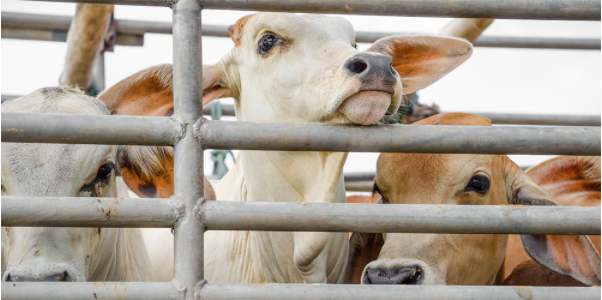Only fit, healthy cattle approved for travel

Theme: Animal welfare
Priority area: Competent livestock handling
Tool: Is the animal fit to load? guide
Location: National
“The Australian red meat industry is absolutely committed to animal welfare practices and ensuring livestock are cared for.”
KEY POINTS:
- Meat & Livestock Australia’s updated guide helps individuals throughout the value chain determine whether cattle are physically up to making a road, rail or domestic sea journey
- To assist consignors, transporters and receivers in their decision-making, the guide includes illustrated examples of circumstances in which cattle must not be loaded
- The 2019 edition features information specifically on individual responsibilities, effluent management and loading densities
Ensuring producers, agents, buyers and drivers move only sound, healthy cattle by road, rail or sea within Australia is an essential part of animal welfare best practice.
To support all four groups in their decision-making, Meat & Livestock Australia (MLA) has republished the national Is the animal fit to load? guide in an updated 2019 edition.
Featuring new content on preparing, loading and delivering cattle (both beef and dairy), as well as sheep and goats, it is especially relevant to operators in drought-affected regions, MLA’s general manager of producer consultation and adoption, Michael Crowley, says.
“With the industry continuing to deal with ongoing dry conditions across many livestock production regions, the release of the revised guide in May was timely,” Michael said.
“The Australian red meat industry is absolutely committed to animal welfare practices and ensuring livestock are cared for.
“This guide has been developed to help livestock operators meet the Australian Animal Welfare Standards & Guidelines for the Land Transport of Livestock and decide whether an animal is fit to be loaded for transport and for the entire journey by road or rail, to any destination within Australia.
“We’re reminding all parties that well-prepared animals travel better and are less stressed, and animal welfare issues are less likely to occur. It’s worth remembering: if in doubt, leave it out.”
It is endorsed by all red meat peak bodies including the Cattle Council of Australia and the Australian Lot Feeders Association and by organisations throughout the value chain such as Animal Health Australia, the Red Meat Advisory Council, the Australian Livestock and Rural Transporters Association, the Australian Livestock & Property Agents Association and the Australian Livestock Markets Association.
Additions to the 2019 edition include details on loading densities, effluent management and the obligations of individuals throughout the transportation process.
“The roles and responsibilities of consignors and transporters are clearly defined in the guide, along with checklists to help assess whether an animal is fit to load,” Michael said.
“Knowing who the ‘person in charge’ of animals is at different stages of the journey and the scope of those responsibilities is important for many reasons.
“This person is responsible for the animals’ welfare and ensuring they are not exposed to or treated in a way that causes pain, injury or distress.
“If they prepare to transport or transport an animal that is unfit, they commit an act of cruelty on that animal and may be liable to prosecution under state or territory legislation. As such, it is also unacceptable for any party to coerce or intimidate the ‘person in charge’ into loading an animal that is not fit for the journey.”
The 30-page guide can be downloaded as a single PDF or ordered in hard copy from www.mla.com.au/isitfittoload.
Categories: Animal welfare